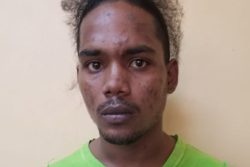Dear Editor,
“Every problem has a solution,” say many secondary school students. Some students note; “life is a gift of God that must be cherished,” and “life is wonderful.” Yet other students emphasize: “talk, talk, and talk about problems,” and “everyone has a purpose in life.” These represent a spectrum of views from students who constituted a sample survey on the suicide problem that afflicts Guyana. The project was conducted by New York Guyana Mission (NYGM) with logistical support from the Ministry of Education.
The fleeting optimism that prevailed when the reported suicide rate declined (by about 21%) between 2016 and 2020 partly in response to initiatives linked to the National Suicide Prevention Strategy 2015-2020, (NSPS), has dissipated as the para-suicide (attempt) rate has been moving aggressively in the opposite direction. While in 2012 the para-suicide rate was 2.5 times higher than the suicide rate (WHO), survey data for 2014 indicate that para-suicide had continued to increase at a rate of 6 times higher than that of suicides. The escalation of the para-suicide rate has continued to the present. The Health Minister Dr. Frank Anthony reports at the recent “Mental Health and Well- Being” (MHWB) Confer-ence that for every suicide case there are about 20 para-suicides. Guyana is still ranked among the top five countries in the world with one of the highest suicide rates.
Consistent with the WHO’s Men-tal Health Plan of 2013, which has suicide prevention as an essential component (with the goal of reducing suicide by 10% by 2020), Guyana produced the National Suicide Prevention Strategy, 2015-2020 after consultations with stakeholders, including health professionals, health care providers, and civil society. What role did empirical research findings play in the development of this strategy is not clear. Neither were young people involved in the process of consultation. Notwith-standing, even the few reports on mental health and suicide that were prepared have not been acted upon, laments Dr. Bhiro Harry at the Guyana MHWB conference.
Given their first-hand knowledge of this problem, students could play a vital role in suicide prevention. The NYGM survey of 111 students drawn from 7 Secondary Schools and comprising all ethnic groups with an average age of 15.4 years, illustrates an awareness and concern of the suicide problem among this constituency. For example, 38 students (34.2%) report that suicide victims were their friends; 14 (12.6%) say the victims were their extended family members; while 5 (4.5%) students indicate that the victims were villagers. Students have been touched directly and indirectly by cases of suicide. They have, accordingly, recommend the introduction of special TV, radio, and recreational programs to address the suicide problem as well as emphasize the need to identify risk factors and having the service of guidance counsellors in each school.
Of the suicides committed by Indo-Guyanese 84.7% are by Hindus while 15.3% are by Muslims (Kay Shako: 2015). The Hindu rate is 2.7 times more than that of Muslims. No information is available for Christian Indo-Guyanese. An interesting question emerges. If Indo-Guyanese Muslims and Indo-Guyanese Hindus grow up in a similar cultural milieu and socialized in the same way, why is there this wide disparity in suicide rates between Hindus and Muslims?” Is it a question of differential access to counseling or better opportunities? Research is needed to study this phenomenon. Another perplexing issue pops up. Guyana, which has an almost similar ethnic structure of population and cultural background as Trinidad & Tobago (T & T), has a suicide rate 2.3 times more than that country. Could this difference be explained by the factor of economic distress? For example, T & T has a per capita GDP that is 2 times more than that of Guyana. Or could the difference be explained in terms of the greater rate of urbanization in T & T compared with Guyana?
While the NYGM survey was conducted a few years ago at the Anna Regina Multilateral School, the main results are applicable to existing social conditions. Updates to this survey have been made from information derived at subsequent workshops, interviews conducted with para-suicides, and content analysis of secondary source data, including newspaper articles/letters. Findings include: (i) the most common method used by both suicides and para-suicides are hanging and poison; (ii) the suicide rate among Indo Guyanese is 56 per 100,000 compared with 8 per 100,000 for Afro-Guyanese. Indo-Guyanese rate is 7 times more than Afro-Guyanese rate; (iii) suicides are committed mostly by rural residents, they are under 40 years, are mostly males (except that in cases of para-suicides, most are females), are pre-dominantly (80%) Indo-Guyanese, are of working class (irrespective of ethnicity) with low educational background; (iv) suicide and para-suicide is either planned or spontaneous; (v) mental illness (bipolar disorder) is linked to many suicides (quantitative data not available); (vi) blocking the easy access to poison and other lethal weapon reduces suicide: (vii) precipitatory (contributory) factors include hopelessness (anomie), loss of status, poor health, rejection, alcohol and drug abuse, isolation, low self-esteem, and a genetic connection; (viii) most students (85.4%) are optimistic that suicides and para-suicides are preventable with timely intervention and counseling. Suicide should not be considered as a personal family misfortune but as a societal problem that cries out for greater understanding and humane action.
Sincerely,
Dr. Tara Singh






